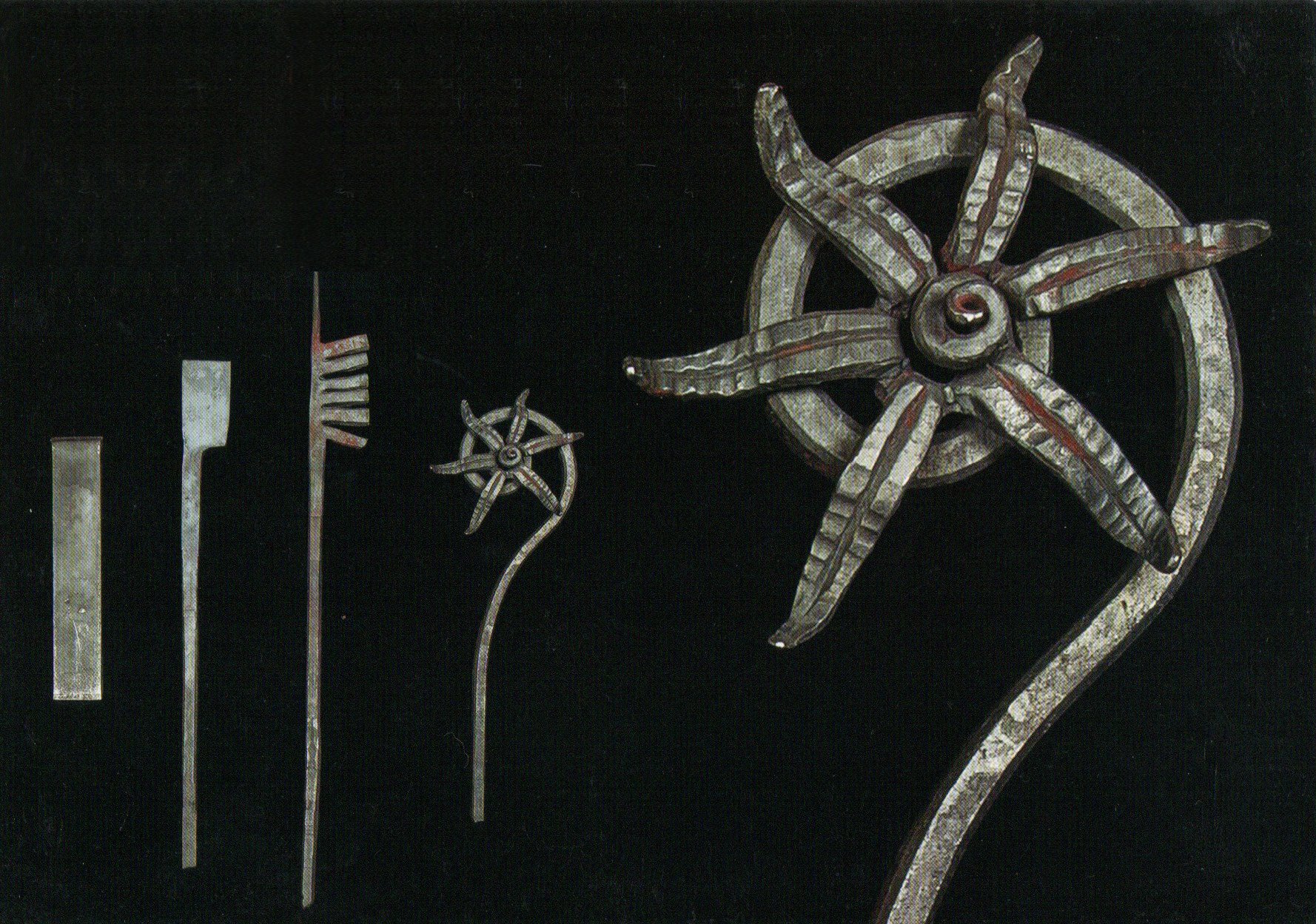
My smithing career began in the mid 1970's when I forged a few chisels from some old metalworking files to use for sculpting marble. The spark was lit, and since then I’ve been very fortunate to have had the opportunity to create many satisfying projects in wrought iron for people all over Arizona and the United States. This journey has taken me from my own shop here in Prescott, Arizona to around the globe; working in a large state-of-the-art ornamental forging shop in Germany, to working and teaching in a very primitive shop in the Philippines.
Today, a career in artsmithing isn’t one entirely spent before the forge and anvil, but also a lifelong study of art and architecture, of ornament and design, of technique and construction practicalities. I have been so lucky to have traveled many times across the U.S. and abroad examining some of the most astounding metalwork ever made, touring contemporary European and American forging shops, seeing the very greatest in new ideas. Just as valuable, are the connections with the Filipino smiths who combine their amazing ingenuity with the very basic of tools to create the items for their everyday needs.
When I sit down to design a project, all of the time spent at the anvil, all of the great works I have studied, all of the brilliant smiths I have known, mingle and play, coalescing to stoke the fires of my imagination………
And, just as imagination is important to an artistic endeavor in site-specific metalwork, the artist blacksmith must fully partner with the architect, interior designer or builder to conceive a workable plan for the project. The smith needs to be able to read blue prints and understand construction techniques to best translate the ideas into reality. The door, gate, railing, or whatever, is not separate from the environment in which it is to be placed, but an integral part of the entire concept. The artist blacksmith brings their own creativity and talent, knowledge and experience to fulfill the goals of the team dynamic.
Hand wrought architectural metalwork is very time consuming. Modern power tools have certainly helped to quicken the pace, but forging iron will always be a laborious task. When undertaking a building project, get the metal artist involved from the very onset so details can be attended to, for example; sub-grade preparations made before the concrete is poured, or measurements that can’t be taken later, or walls that need support backing before they are finished. To ignore the very smallest of details can lead to a very poor result or loss of time. Of course, nothing ever goes exactly right or every little detail thought of and that’s precisely when having decades of experience comes in handy. One only masters their craft after years on the job, there is no other way, you have to put in the time to gain the experience to deal with any problems that arise. Unfortunately, watching a couple of YouTube videos won’t make you a pro.
Many of the techniques I use are unfamiliar to modern builders because they aren’t the fastest way to do something, but they are tried and true and have worked through the ages. My advice: do the research to find the best resources, use the best materials and tools, and do the best job you can no matter what. Thinking how you can do a job the cheapest way will certainly be your downfall, you might as well take up welding.
Estimating the cost of a one-of-a-kind wrought ironwork project can be very difficult and time consuming, it is a calculation of materials and time (labor) i.e., designing, engineering, production, and installation. Even with years of experience one can only really conjure up a summation with the known numbers and a good guess, because in all art there is always an amount of spontaneity in the creative process. And sure, it would be nice to be given carte blanche, or at least get paid time and materials, those circumstances happen but it’s rare. Most customers want to know how much it’s going to cost. I do the very best I can to come up with a price and stick to it. I do not give “ballpark estimates” and I don’t bid against welding shops.
Once the initial concept or item is agreed upon with all parties, the design stage begins. On small jobs sometimes a quick sketch is all that is needed, other jobs require full scale drawings or shop drawings to proceed. On very large and multi-faceted jobs, I like to receive a design retainer to pay for research and drawing throughout the project. A quick sketch is free, full-scale drawings and shop drawings are billed by the hour. Payment schedules are determined by overall cost and or progress reports, larger amounts are divided into installments paid over the course of the job, smaller amounts require sixty percent down before the work starts. Changes made by the client after the work has started will be assessed and billed at the hourly shop rate and all balances are due upon completion.
“It is easier to do a job right than to explain why you didn’t.”
Martin Van Buren
Organizations:
1976 - Present
Artist – Blacksmith’s Association of North America
1982 - Present
Arizona Artist Blacksmith Association





